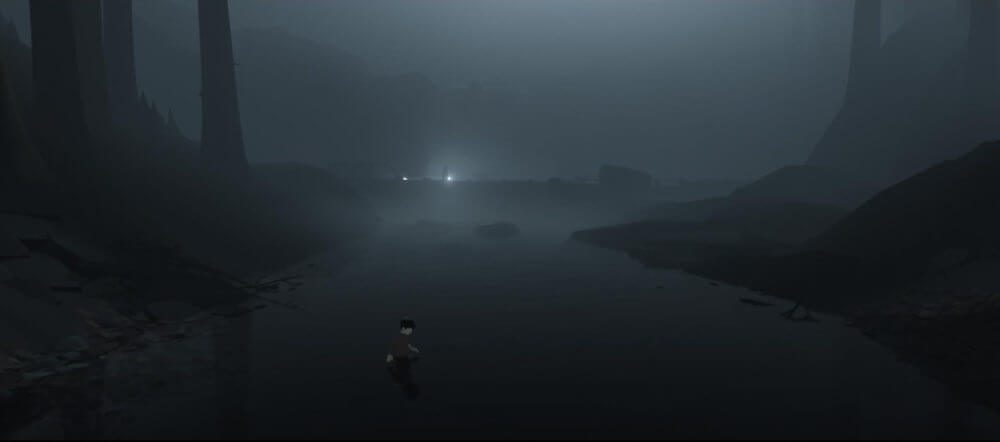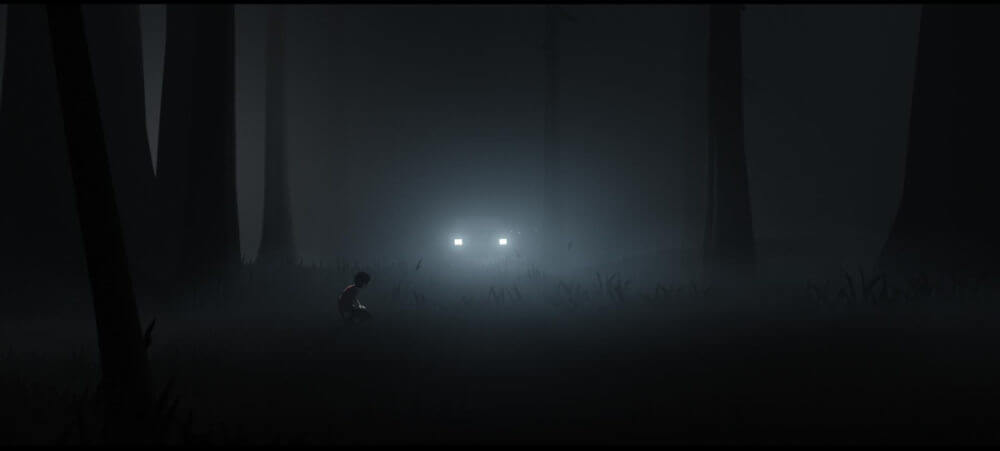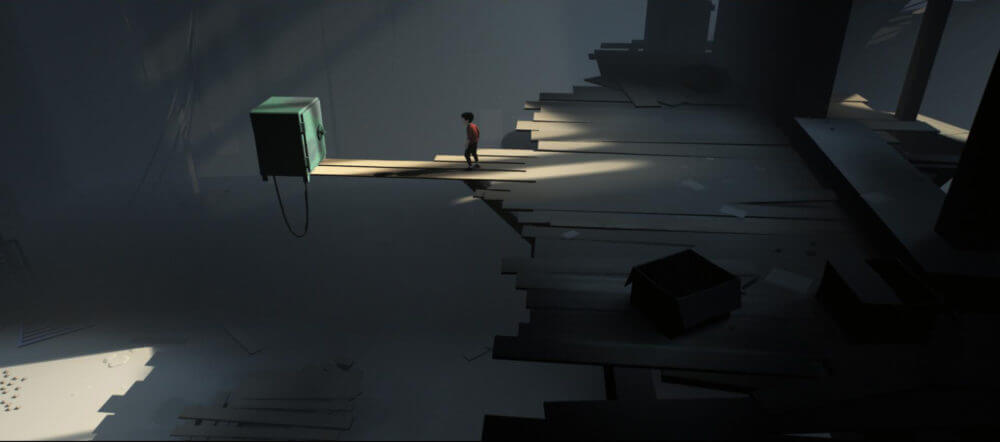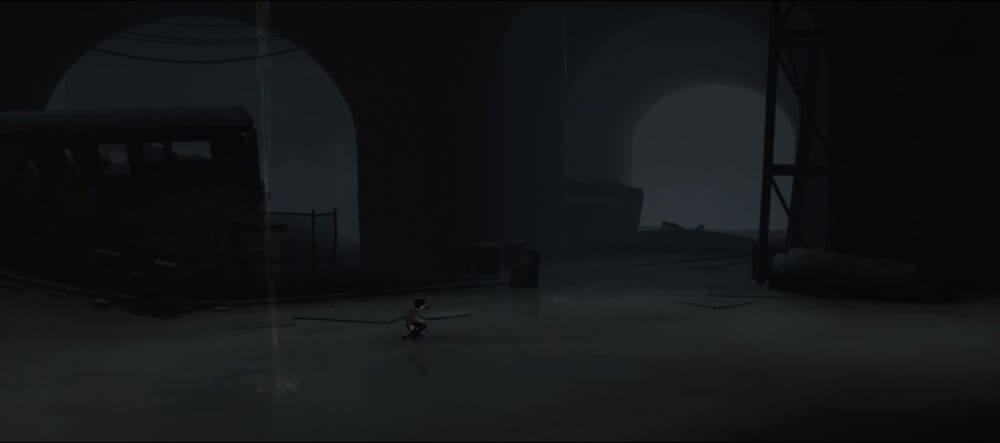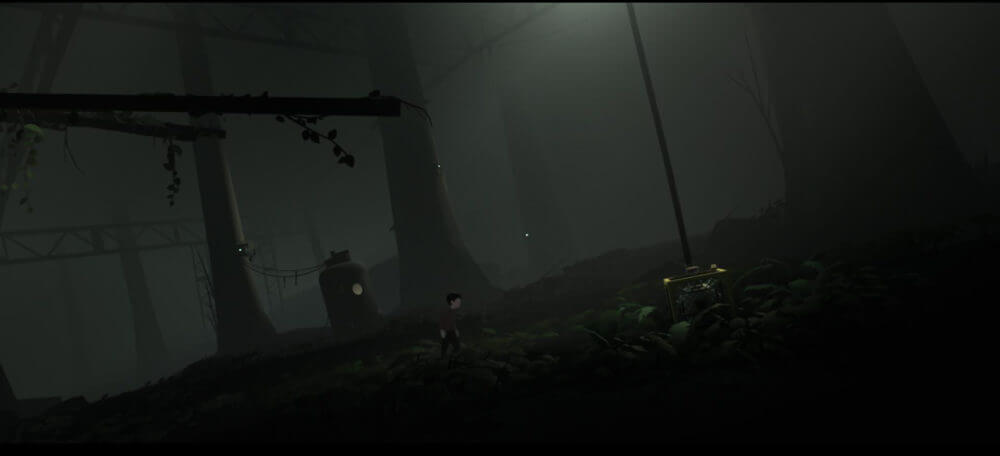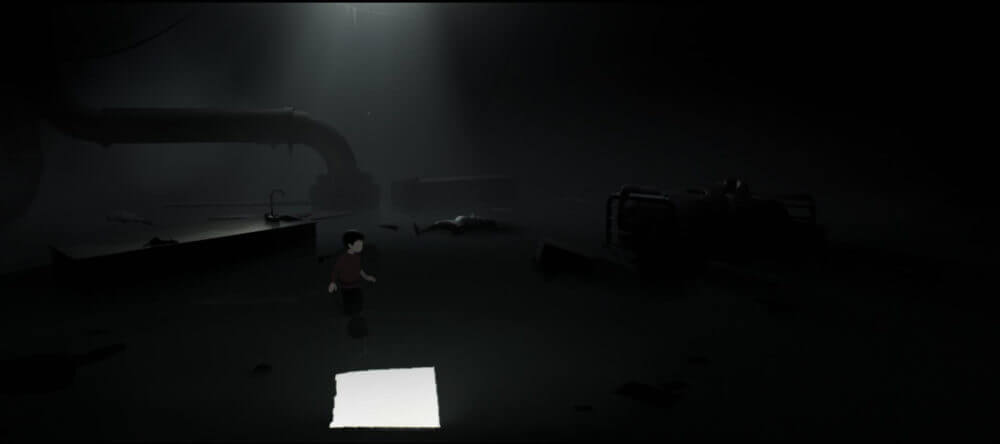You’re running through a forest. There are men with guns and attacks dogs all around. You sneak as quickly and quietly as you can, but it’s no use. They are coming after you, and if they catch you, well, you don’t want them to catch you. In the opening moments of Inside, you will have no idea what’s going on. You won’t know why you’re sneaking past these armed men and their dogs and you won’t know why you’re a child that’s alone in the woods. The only thing you will know is that you have got to keep moving. You need to keep heading towards your goal. And, when you finally reach your destination, you’ll ask yourself “what the heck just happened?!” Hit the jump to read on!
Inside is the second game from developer Play Dead, the creators of Limbo. And much like its predecessor, Inside isn’t filled with a heavily voice-acted narrative with supporting characters and a pulse-pounding soundtrack. It’s a simple game with a story that is anything but simple. Because of that, it’s hard to speak about Inside in a meaningful way without spoiling something major in the game. With that in mind, I’ll do my best to avoid mentioning anything that would take away from the experience. Because that’s what Inside is, an experience.
Inside is a 2D puzzle platformer in much the same way Limbo was. So if you are at all familiar with Limbo, you’ll feel right at home with this game. For those of you not familiar; it’s a game that takes place on a two-dimensional plane, you can only travel left or right on the screen. There are items either directly in your path, or slightly in the foreground or background that you can interact with. And a majority of the puzzles revolve around physics. For example, you’re walking on a wooden floor that looks like it could break if enough weight were to drop onto it. Above this damaged area of the floor is a large and heavy safe conveniently placed above it on a ledge. To proceed, you just push the safe off the ledge and let it smash through the floor, opening a new path.
Of course, all of the puzzles won’t be as simple as that one. Although, in my opinion, the puzzles in Inside are not nearly as mind bending as the puzzles in Limbo. However, the settings and the atmosphere easily trump anything that was in Limbo. It’s a bit of a trade off, but it’s one I can live with.
This might be a bit hyperbolic, but Inside is probably the most atmospheric game I’ve played this year. If you pay attention to the environment and everything you encounter throughout the game, then you’ll be treated to a harrowing tale that will leave you questioning yourself and the role you played in the story. And it is all done without anyone uttering a single word. I don’t want to go into detail, but I can pretty much guarantee your questions might not all be answered. So in the interest of no spoilers, I’ll only say that a large portion of the game is left up for interpretation. But, I think that’s where the strength in Inside‘s narrative lies.
There are games where it’s all about the journey, but not the destination. Although that might also apply to Inside as well, the destination is what will keep people talking about this game for a long time.
Inside is out now for PC and Xbox One.
WARNING: SPOILERS AHEAD
If you’re still reading this, I really hope you’ve beaten Inside already because I need to talk about the ending.
The ending to Inside is both a feat of technical ingenuity and a testament to insanity. I mean, you take control of a literal flesh pile of people mashed together into a giant hulking behemoth. Thinking about it physically makes me want to cringe, but at the same time I can’t help but appreciate the amount of work that went into bringing Legion from Castlevania to life in 2016. When you’re just idling in one spot, you can see the legs of Legion working to balance its body as its mass shifts from side to side. If you pick up a box, you watch as the many arms of Legion hold the box and hand it off to one another to bring it around its body.
Marveling about Legion aside, the ending of Inside brings up a lot of questions about who is actually in control. Are you, as the boy, operating under your own free will? Or are you being controlled by Legion to set it free? Throughout the course of the game, it becomes pretty clear that you aren’t trying to escape from anyone, you’re breaking into the facility where Legion is being held. On your way to Legion, you come across a bunch of other humans that look like just empty shells waiting to have someone operate them. And, in some instances, you do exactly that by attaching yourself into a mind control unit. Eventually you get the ability to control these shells without the use of the helmet. Now, this could either be because you’re in close proximity to Legion, or you gain this ability after you are killed by the drowned girl. I’m not sure what the answer is, but I would love to talk it out with somebody.
END SPOILERS
